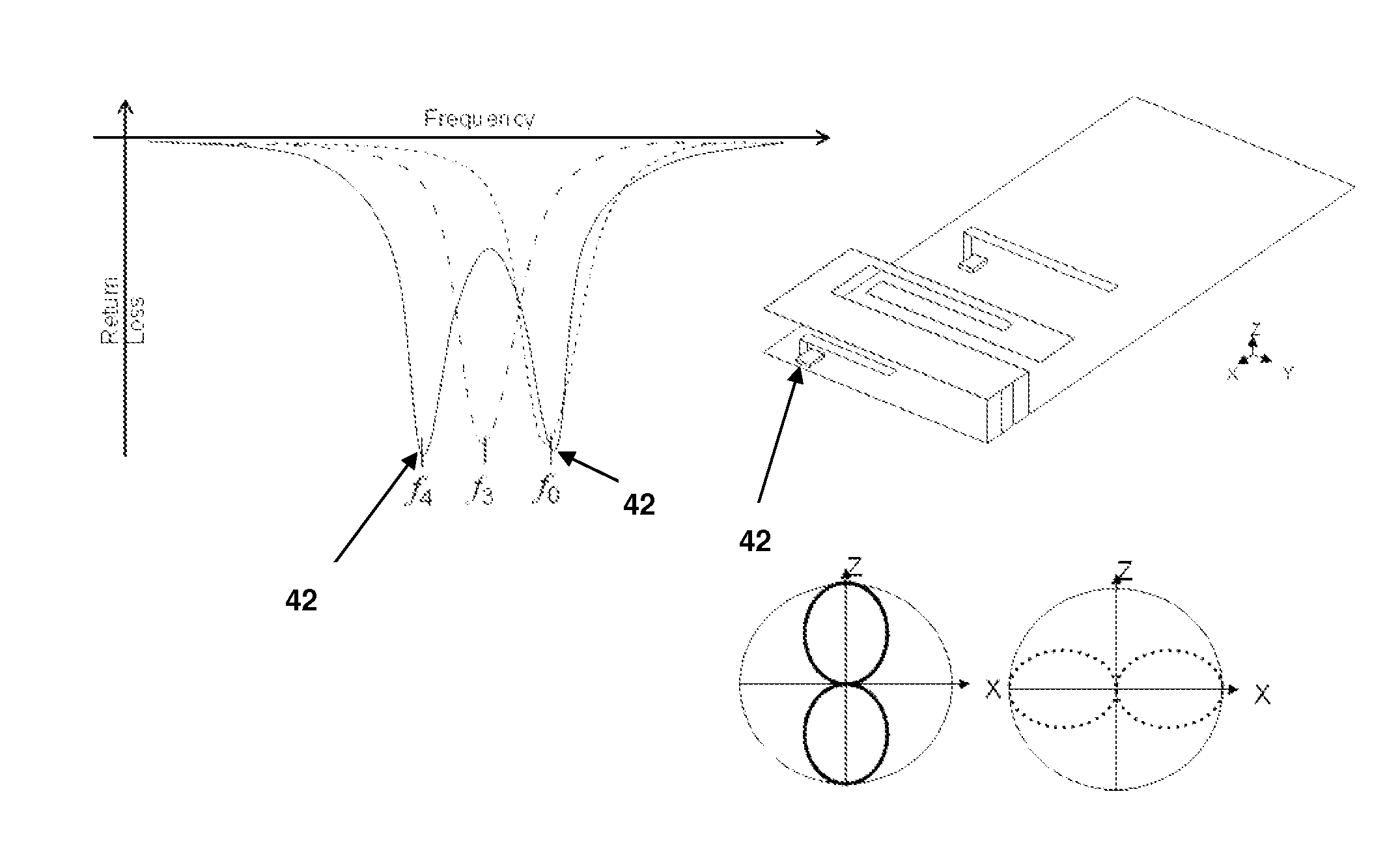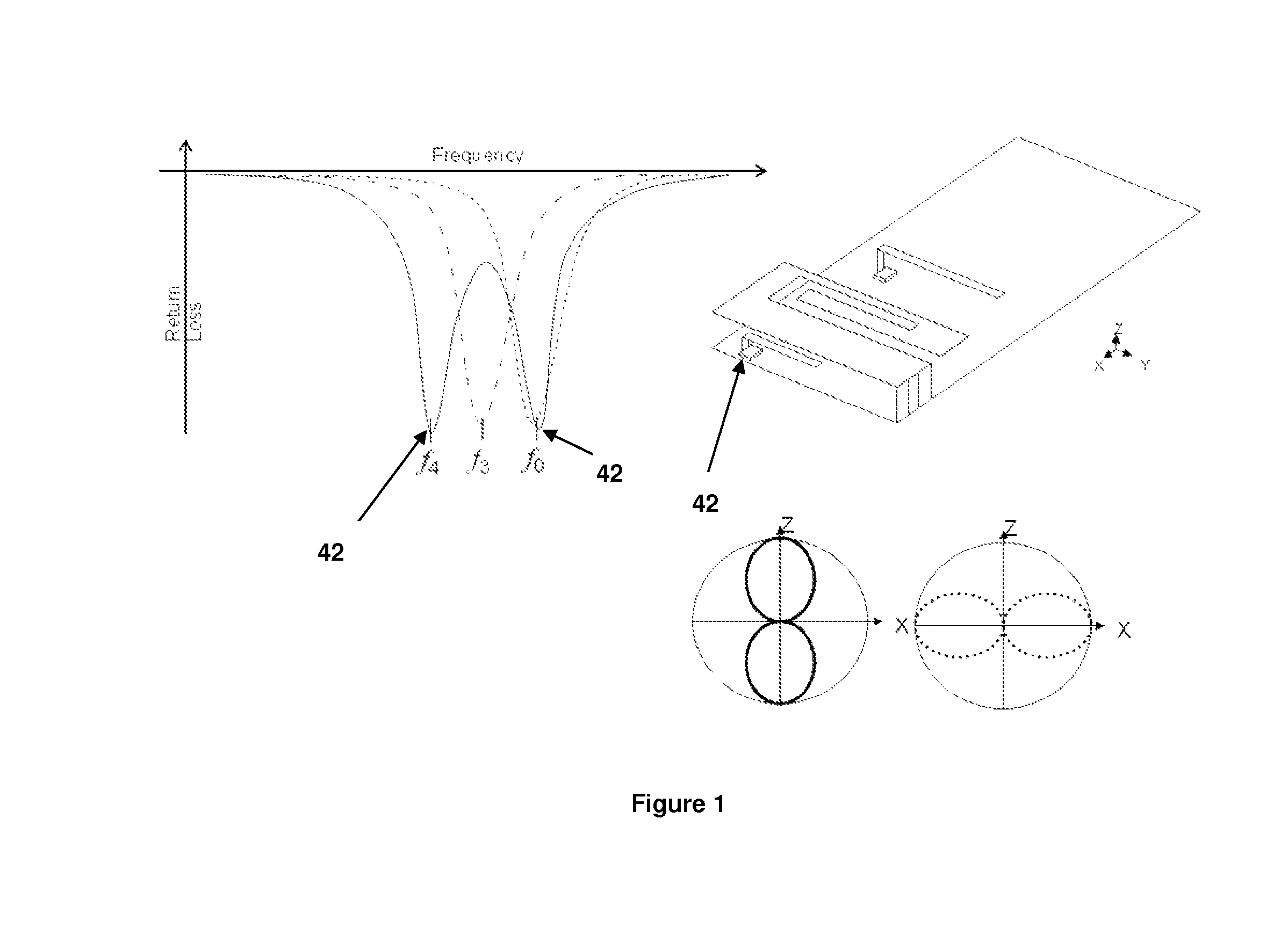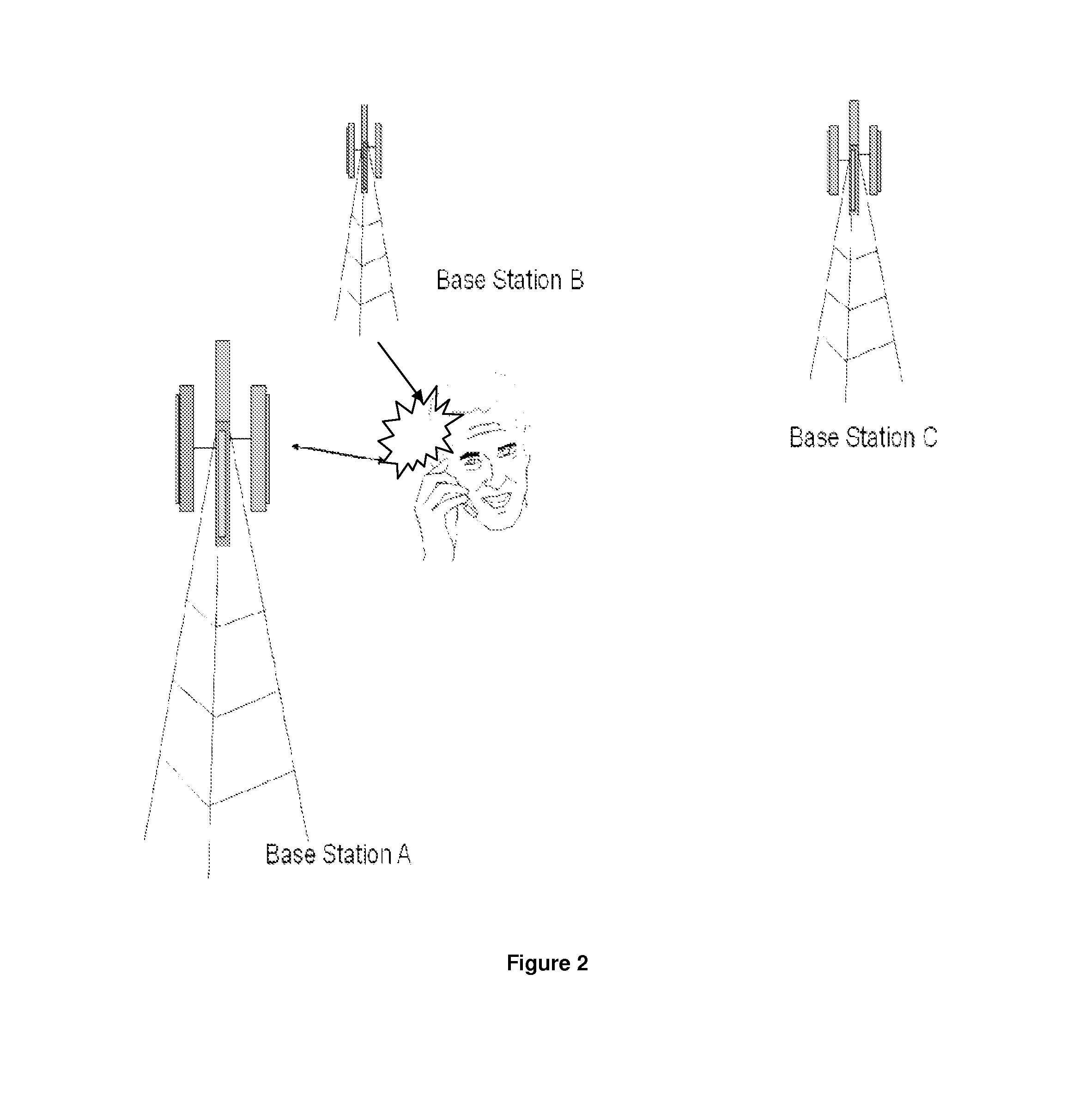Automatic Signal, SAR, and HAC Adjustment with Modal Antenna Using Proximity Sensors or Pre-defined Conditions
- Summary
- Abstract
- Description
- Claims
- Application Information
AI Technical Summary
Benefits of technology
Problems solved by technology
Method used
Image
Examples
Embodiment Construction
[0023]The antenna systems and methods described herein utilize a beam steering technique to reduce interference from one or multiple sources. A platform has been derived to increase the link budget based on the modification of the antenna radiation pattern and is, in part, based upon U.S. Ser. No. 12 / 043,090, filed Mar. 05, 2008, titled “ANTENNA AND METHOD FOR STEERING ANTENNA BEAM DIRECTION”, which issued as U.S. Pat. No. 7,911,402 on Mar. 22, 2011, hereinafter “the '402 patent”; the contents of which are hereby incorporated by reference. The '402 patent describes a modal adaptive antenna system, which uses an antenna radiation pattern beam steering technique to improve communication link quality between the mobile wireless device and the base terminal. This technique provides an antenna with multiple radiation pattern states along with an algorithm to dynamically sample link performance and adjust the radiation pattern of the mobile antenna to improve communication link quality. T...
PUM
 Login to View More
Login to View More Abstract
Description
Claims
Application Information
 Login to View More
Login to View More - R&D
- Intellectual Property
- Life Sciences
- Materials
- Tech Scout
- Unparalleled Data Quality
- Higher Quality Content
- 60% Fewer Hallucinations
Browse by: Latest US Patents, China's latest patents, Technical Efficacy Thesaurus, Application Domain, Technology Topic, Popular Technical Reports.
© 2025 PatSnap. All rights reserved.Legal|Privacy policy|Modern Slavery Act Transparency Statement|Sitemap|About US| Contact US: help@patsnap.com



